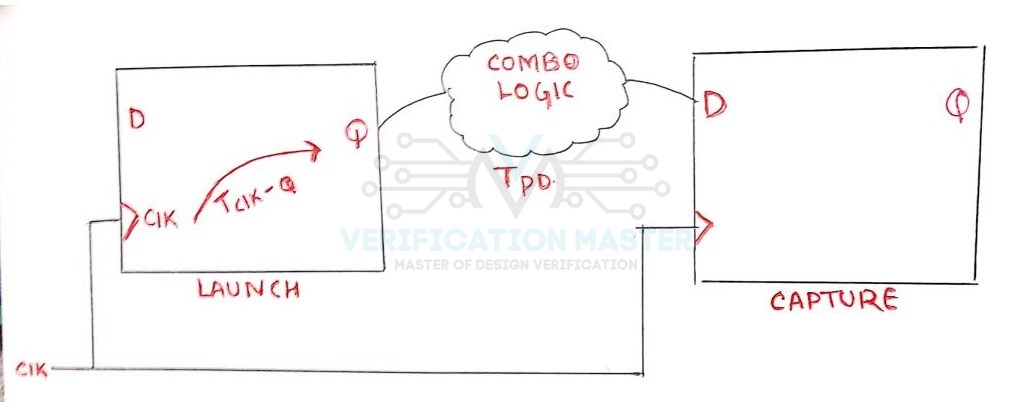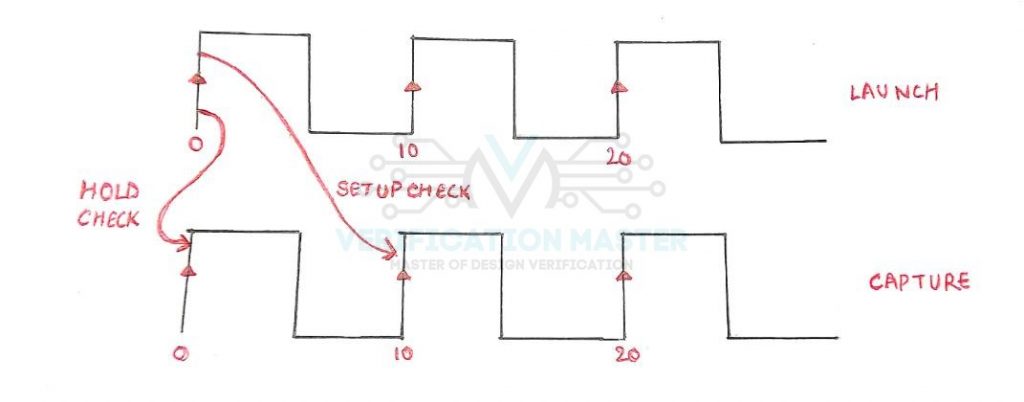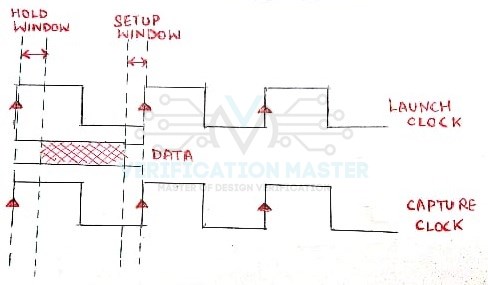In previous blogs, you must be wondering what is the concept of Setup time and Hold time. So, now you will get a good understanding of the terms.
Before proceeding to the Setup and Hold Time you should have an idea about the following terms:-
Launch Flop
The Flip-Flop that launches/sends the Data Signal is known as Launch Flop.(Ref Fig.1)
Capture Flop
The Flip-Flop that captures/receives the Data Signal is known as Capture Flop. (Ref Fig.1)

Fig. 1: Launch and Capture Flop
Launch Edge
The Clock Edge (positive/negative) at which the Data Signal is launched from the Launch Flop is known as Launch Edge.(Ref Fig.2)
Capture Edge
The Clock Edge (positive/negative) at which the Data Signal is Captured by the Capture Flop is known as Capture Edge. (Ref Fig.2)
Metastable State
When the output of a circuit is unpredictable then it enters into a Metastable State. Simply when the circuit is not stable about its state (whether it is 1 or 0) it is known as Metastable State.
 Fig. 2: Launch Edge and Capture Edge
Fig. 2: Launch Edge and Capture Edge
Setup Time
Before going to the technical terms let’s take an example. Suppose you have to take a flight at 7 pm from Delhi to Mumbai so for this you will reach the airport around 5 or 6 pm for the various security checks luggage checking and for other purposes to avoid the last-minute rush you will not reach at exactly at 7 pm as you can miss the flight. So the time at which you have to reach the airport before the flight will be referred to as Setup Time.
Similarly, when data is launched from the Launch Flop and reaches the Capture Flop so, it needs to reach the Capture Flop Setup Time before the Active Edge of the Clock to be Captured correctly. The reason behind this is that if the data reaches exactly at the Active Edge or after the Active Edge then there it will enter a state called Metastable. So, Setup Time is the minimum amount of time before the active edge of a clock the data must be stable to be captured correctly and processed correctly. Setup check is done on the next clock edge. Refer Fig. 2 and 3
Hold Time:-
Now, when you have boarded the flight you need some time to settle down in flight and to put on your seat belts so that a safe journey is ensured. So, the amount of time it takes to settle down after you have boarded the flight is called Hold Time.
Similarly, when data is launched from the launch edge so there is a time during which the data must not change otherwise it will go into a Metastable state and will not be captured correctly and that time is referred to as Hold Time. So, Hold time is the minimum amount of time after the active edge of the clock for which the data must be stable to be captured correctly and processed correctly. Hold check is done on the same clock edge. Refer Fig.2 and 3
Fig. 3: Hold Window and Setup Window
From the above figure it is clear that the Data can change anywhere between the Setup and Hold Window but it must be stable during the Setup and Hold Window.
- So, from this blog you can answer the following questions:-
- Q1) Define Setup Time.
- Q2) Define Hold Time.
- Q3) Give a timing waveform for the setup time window and hold time window.

